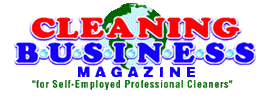The Economy – Cleaning in the U.S.A.
The Economy
Signals are mixed. There is quite a bit to talk about a recovery or signs of things getting better and key segments of the economy holding their own. But for the most part, on the street, we’re not seeing it yet. Although some areas of the country and market segments remain strong, others are truly suffering from the impact of cutbacks, closings and consolidation. The government is doing what it can to stimulate the economy and encourage growth with tax cuts and keeping the interest rate low, at the same time, jobs are being lost and budgets are being slashed in most market segments. Housing starts and sales remain strong and gas prices have peaked after a 25-cent per gallon increase during September and now appear to be headed down.
All of this impacts cleaning business owners and workers on a daily basis. The word I hear on the street is that “things are tight.” Customers want better prices and the pressure is on contractors to continue to find ways to increase production without a loss in quality or service. New processes, products and equipment are available to do this but unfortunately many times business owners haven’t kept up with advances in technology so they are unaware of what’s available to help them increase production and remain profitable.
On the bright side, outsourcing of services continues to increase as the federal and state governments as well as businesses look for ways to reduce costs by shifting the responsibility for wages, staffing and insurance costs to outside contractors.
With the presidential elections a little more than a year away, I would expect the federal government to take additional step to build stability in the economy.
Upward Mobility
Finding and keeping qualified workers continues to haunt building service contractors in the USA. Even with an increase in the number of people who are unemployed, the number and quality of applicants who are applying for cleaning jobs has increased only slightly over the last year.
One of the areas where I believe the cleaning industry has missed the boat is in creating an attractive upward mobility ladder for workers. The basic problem is that cleaning jobs aren’t all that attractive. There isn’t a lot of glamour sticking your hand in toilets for 8 hours a day or even dumping trash or vacuuming for an extended period. We really need to find better ways of attracting and retaining quality workers. Talking about the job itself just isn’t going to do it. Individual employers need to offer training, advancement opportunities and better pay for their best workers. Until this happens, I think the staffing problem will only continue to get worse.
Trends in Hard Floor Care
Carpeting continues to lose market share each year. In the 80’s wall-to-wall carpeting accounted for over 70% of the floor covering materials sold and installed in the USA. Today, that number has shrank to roughly 55%, with area rugs accounting for another 12% of the market.
The biggest growth has taken place in laminate flooring, wood, ceramic tile and stone materials. These trends are expected to continue as homeowners, architects and interior designers experiment with new and different hard surface floor covering materials.
One interesting development in the floor finish side of the industry is growth in the market for pre-finished floor covering materials and the use of on-site applied semi-permanent coatings that do not require burnishing, stripping or refinishing to retain a shine. The only downside to such products is that if recoating or removal is needed, the surface must be abraded with a 120-grit screen mesh-sanding disk.
The LEED Program
The U. S. Green Building Council (www.usgbc.org) has developed and is now introducing it’s “Leadership in Energy and Environment Design” (LEED) certification program that rates new and existing buildings based on criteria that promote environmental stewardship, energy conservation, safety and a healthy indoor environment.
The program is based on a rating system that awards points for various accomplishments such as using environmentally preferable chemicals, reducing the waste stream, recycling and a list of other factors.
I expect that the LEED program will first show up in state, municipal and federal government buildings, then educational and health care facilities, followed by Class A office buildings and other commercial and institutional markets. From a contractor’s standpoint, being able to help a customer get their building LEED certified could be a selling point with potential customers.
Complete details regarding the LEED Program can be downloaded from the USGBC site at: www.usgbc.org
















